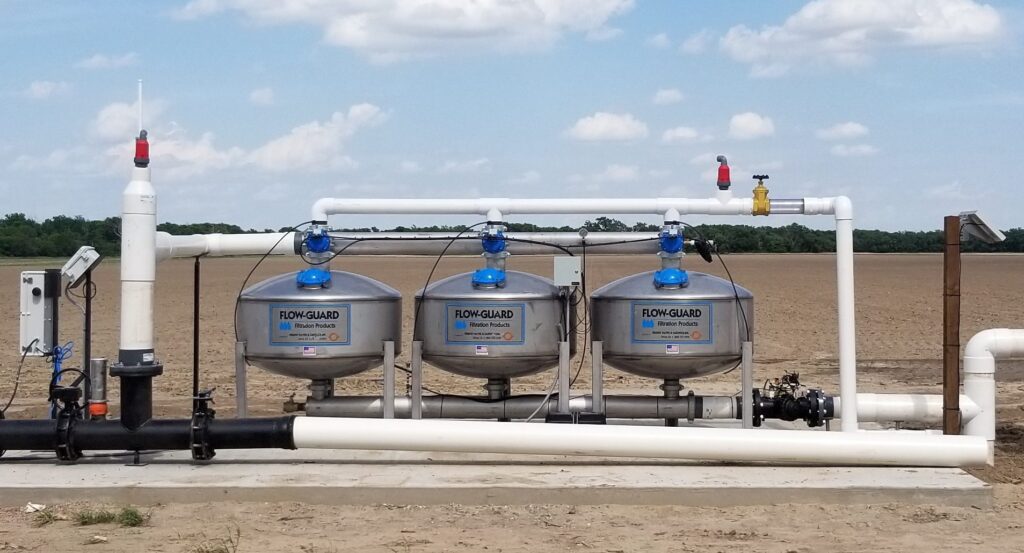Understanding Soybean Crop Irrigation Per Day
When it comes to maximizing the yield of your soybean crop, understanding the basics of irrigation is non-negotiable. “Understanding Soybean Irrigation: Daily Practices for Optimal Growth” directs your attention to the intricate balancing act that lies at the heart of successful irrigation. This guide offers you insights into the specific water needs of soybeans at different stages of growth, and how overwatering or underwatering can directly impact crop yield. By integrating daily weather forecasts and soil moisture conditions into your irrigation strategy, you can ensure your soybeans receive just the right amount of water they need to flourish. Join us as we delve into the nuances of soybean crop irrigation per day tailored for optimal soybean growth.
Understanding Soybean Water Needs
Soybeans, like all plants, need water to grow and produce a healthy crop. The amount of water required can vary depending on the growth stage of the plant, the local climate, and the specific variety of soybeans.
Water Requirements During Various Growth Stages
- Vegetative Stage: During the vegetative stage, which includes emergence and the development of leaves, soybean plants require less water compared to the reproductive stage. However, adequate moisture is essential for successful establishment and early growth.
- Reproductive Stage: The reproductive stage, which includes flowering, pod formation, and seed filling, is when soybeans have the highest water demand. This is because the plant is producing seeds, which requires more energy and therefore more water.

Impact of Local Climate and Soybean Variety on Water Needs
Local climate can significantly impact the water needs of soybean crops. In regions with high temperatures and low rainfall, irrigation may be necessary to meet the plant’s water requirements. On the other hand, in areas with cooler temperatures and regular rainfall, natural precipitation may provide enough water for the crops.
The variety of soybean also plays a role in determining water needs. Different soybean varieties might have different root systems, growth habits, and maturity dates, all of which can influence their water requirements.
The Risks of Overwatering and Underwatering
Proper watering is crucial to the health and productivity of crops. Both overwatering and underwatering can have detrimental effects, leading to compromised plant health and reduced yields.
Consequences of Overwatering: Oxygen Deficiency, Diseases
Overwatering can lead to oxygen deficiency in the soil, which can suffocate plant roots. When the soil is waterlogged, it restricts the amount of air that can reach the roots. This lack of oxygen can hinder root development and nutrient uptake, leading to stunted growth and even plant death.
In addition, overwatering creates a damp environment that is conducive to the growth of fungi and other disease-causing organisms. Diseases like root rot, leaf spot, and blight are more common in overly wet conditions. Overwatering can also lead to nutrient leaching, where essential nutrients are washed away from the root zone, further compromising plant health.
Consequences of Underwatering: Drought Stress, Reduced Yield
On the other hand, underwatering can lead to drought stress in plants. When plants don’t receive enough water, they may wilt, drop leaves, or show signs of browning or yellowing. These are all symptoms of drought stress, which can weaken plants and make them more susceptible to pests and diseases.
Underwatering can also significantly reduce crop yields. Water is essential for photosynthesis and other physiological processes in plants. Without adequate water, these processes can be hindered, leading to poor plant growth and reduced fruit or grain production.
Monitoring Soil Moisture and Weather Forecasts
Understanding soil moisture levels and keeping an eye on daily weather forecasts are essential components of efficient irrigation planning. Both provide crucial information that helps determine when and how much to irrigate.
Importance of Soil Moisture in Determining Irrigation Needs
Soil moisture is a key indicator of the water available to crops. It tells us how much water is present in the soil that can be readily absorbed by plant roots. Monitoring soil moisture levels can help farmers avoid both overwatering and underwatering, which can harm crop health and productivity.
By regularly checking soil moisture, farmers can better understand when their crops need watering. If the soil is too dry, it may be time to irrigate. If the soil is adequately moist, additional watering may not be necessary, saving water and energy resources.
Role of Daily Weather Forecasts in Irrigation Planning
Weather forecasts play a significant role in irrigation planning. They can provide valuable information about upcoming weather conditions that may impact crop water needs.
For instance, if the forecast predicts rain, farmers may choose to delay irrigation. On the other hand, if high temperatures and dry conditions are expected, it might be necessary to increase irrigation to prevent drought stress.
Moreover, weather forecasts can also help predict potential disease outbreaks. Certain diseases thrive under specific weather conditions, such as high humidity or prolonged wetness. By staying informed about the weather, farmers can take preemptive action to protect their crops.

Creating an Effective Irrigation Schedule
Planning an effective soybean irrigation schedule is a crucial part of farming, especially for crops such as soybeans that have specific water needs at different growth stages. Here’s how to incorporate soybean water needs, soil moisture, and weather forecasts into your irrigation planning:
- Understand Soybean Water Needs: As discussed earlier, soybeans have varying water requirements at different growth stages. During the vegetative stage, the water requirement is less compared to the reproductive stage. Therefore, your irrigation schedule should align with these needs.
- Monitor Soil Moisture: Regularly monitoring soil moisture is essential. It helps you understand when your crops need watering and how much water they need. If the soil is too dry, it may be time to irrigate. If the soil is adequately moist, additional watering may not be necessary.
- Consider Weather Forecasts: Weather forecasts can provide valuable information about upcoming weather conditions that may impact crop water needs. If rain is forecasted, you might delay irrigation. Conversely, if high temperatures and dry conditions are predicted, you might need to increase irrigation.
Tips and Best Practices
- Use the Checkbook Method: The checkbook method of scheduling for irrigation of your soybean is a simple and effective way to manage irrigation. Just like you track deposits and withdrawals in a checkbook, this method involves tracking inputs (rainfall and irrigation) and outputs (crop water use or evapotranspiration) to maintain balanced soil water.
- Know Your Sprinkler Rates: Understanding the precipitation rates of your irrigation system is crucial for creating an optimum irrigation schedule.
- Avoid Overwatering and Underwatering: Both can have detrimental effects on your crops, leading to diseases, oxygen deficiency, drought stress, and reduced yields.
- Irrigate Early in the Morning: This helps to reduce water loss through evaporation and allows for the water to penetrate deeply into the soil before temperatures rise.
Remember, every field is different. It’s important to adjust your irrigation schedule based on the specific needs of your crops and the conditions in your area.
